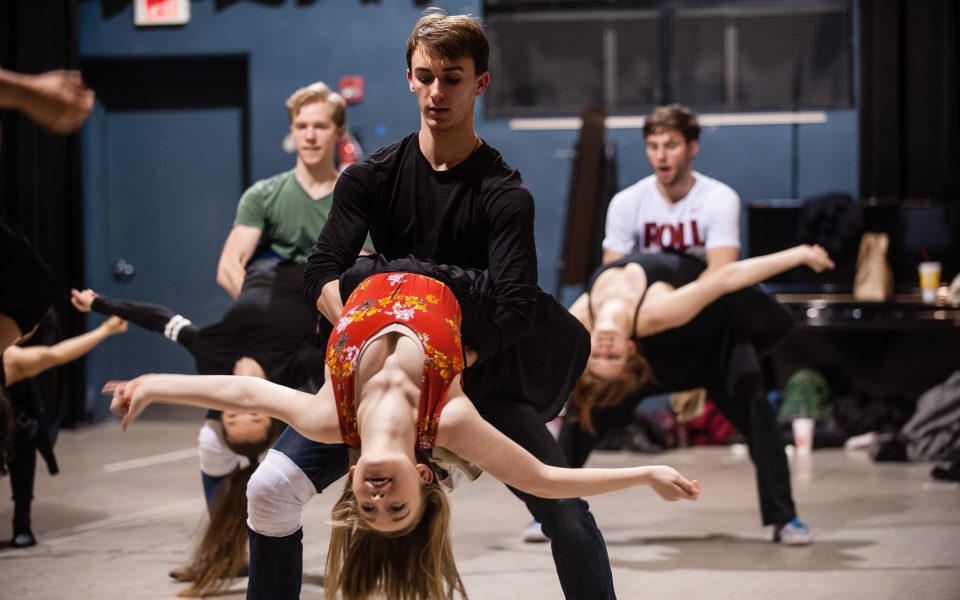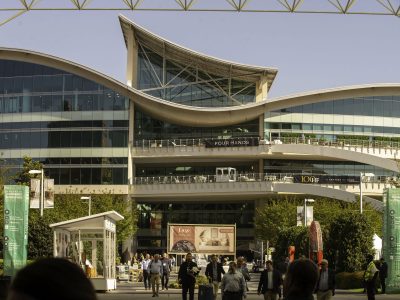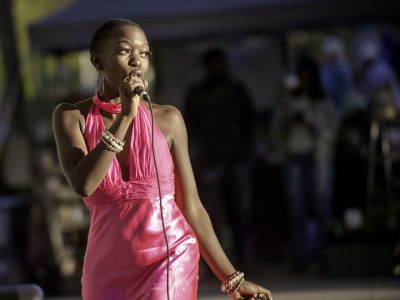by Brian Clarey
It’s tough to winnow down a year of film, theater, fine art and literature in one small space, especially considering most of the heavy lifting this year was done by our interns Anthony Harrison, Sayaka Matsuoka, Chris Nafekh and Daniel Wirtheim. But I did manage to trot my notebook out to a few fantastic arts events in 2015 of the sort that define the culture of the Triad.
In April I embedded with a troupe from the UNC School of the Arts for their production of Guys & Dolls, an authentic staging of the classic Broadway hit based on the work of Damon Runyon. From costumes and set design to the music and movement on stage, every inch of the performance came from the students of our conservatory, and it was one of the best pieces of theater I saw this year.
Triad Stage’s Common Enemy also thrilled me: an original morality play by Creative Director Preston Lane set against the backdrop of college basketball that I probably have had 20 conversations about since it debuted in June.
I was able to do some writing about the South Elm Projects, a multifaceted, practical art installation that Elsewhere installed in its South Elm neighborhood. The hopscotch grid, a meandering path that loosely defined downtown Greensboro, had already gone up by July, when I interviewed Patrick McDonnell, the city planner who had taken residence with a crew of urban artists in the reclaimed thrift store. The projects themselves — which included a landscaped garden in Elsewhere’s backyard, the Black Lunch Tables at Gate City Boulevard, murals and activated green spaces — are almost as impressive as the notion behind them. It was a subversive way to sneak some art into downtown Greensboro.
The biggest art story in downtown Winston-Salem came in the form of a small patch of land given over to sculpture, murals and mist, which emanates at regular intervals from the tall, red towers of the Artivity on the Green. Great concept. Terrible name.
Probably the second biggest story is the return of Patrick Harris, the Camel City artist who left for Charleston last year and came back with a few sophisticated tweaks to his pop-art style.
Of the local art I’ve taken in this year, much of it has been on public walls. Murals in all of our cities bloomed on formerly blank canvases, and one piece of public art at the Mill in downtown Greensboro got switched out for the Duck Head corporate logo. It raised some ire among the bohemian crowd, but if the big duck hadn’t been painted over an existing mural by the Miami artist Art of Chase, people would have loved it.
In the galleries, I caught an interesting installation at the Greenhill by artist Jonathan Brilliant with one piece that took up most of the room. At the center of The Greensboro Piece, built on the concept of the coffee shop as a nurturing environment, was a massive sculpture made from 70,000 coffee stirrers held together by tension. In August, the artist allowed a throng of children to tear down the piece and take bits of it home as souvenirs.
At the Weatherspoon Art Museum, I took in Full Stop, a piece by Tom Burckhardt that recreated his New York studio using only corrugated cardboard, black ink and hot glue. The details — books on the shelves, ducts on the wall, tubes of paint and a turntable that looks as if it could actually work — inspired a couple return visits.
Pop art made a home in Winston-Salem at the Southeastern Center for Contemporary Art with Point and Counterpoint, an installation by North Carolina artists from Asheville to Ocracoke — all fellows of the NC Arts Council. That one is still up. And will be until Jan. 17.
Also still available for viewing is the public art display in Greensboro’s Lindley Park, a yarn bomb that exploded onto the rails of the bridge over Wendover Avenue, which, incidentally, is visible from Jordan Green’s house.
Join the First Amendment Society, a membership that goes directly to funding TCB‘s newsroom.
We believe that reporting can save the world.
The TCB First Amendment Society recognizes the vital role of a free, unfettered press with a bundling of local experiences designed to build community, and unique engagements with our newsroom that will help you understand, and shape, local journalism’s critical role in uplifting the people in our cities.
All revenue goes directly into the newsroom as reporters’ salaries and freelance commissions.





Leave a Reply